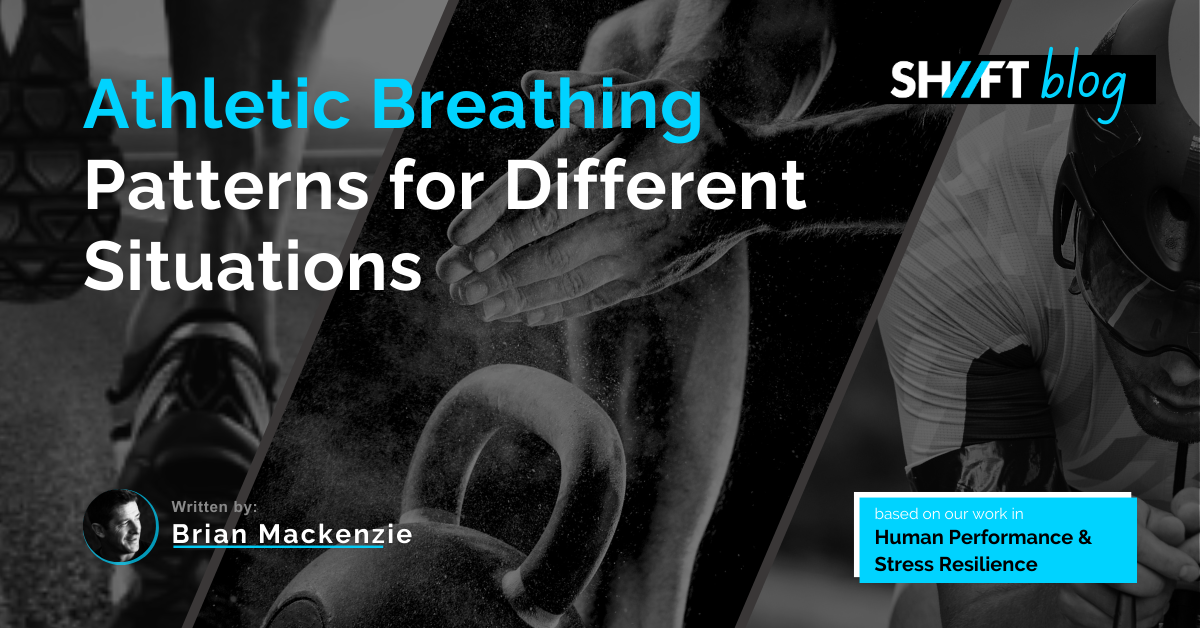Athletically speaking, in almost all sports, the pulmonary muscles will be prioritized over all other muscles. This phenomenon is known as the respiratory metaboreflex. The weaker the primary breathing muscles are, the sooner blood is diverted from the loco motor muscles to these muscles. These concepts are important for understanding and adopting athletic breathing patterns.
When I discussed the difference in nose breathing and mouth breathing in a separate article, I explained the importance of understanding that for most exercise or training below moderate efforts, nasal breathing is far more effective at developing these muscles, and in turn, allows us to continue to program (motor control & endurance) to use them when we switch to mouth breathing.
Many Athletes Suffer from Respiratory-Related Issues
Whether it be breathlessness, exercise-induced asthma, or anything related to breathing at the top levels, many athletes suffer from respiratory-related issues. My work alone brought me to this understanding of myself and many of the athletes I’ve worked with. Since the advent of Near Infrared Spectroscopy (NIRs) technology and research, many in the endurance world are waking up to this cold, hard fact, as it can show pulmonary-related issues at the tissue level. So, how do we change this?
Breathing is Fundamental
First, understanding breathing is fundamental; nobody is doing anything wrong or incorrectly. I know this may read incorrectly, but the paradox is that breathing is telling a story, and unless you’re in an iron lung, you will be ok.
That said, optimizing our breathing develops stronger tissue, helps you last longer (endurance), aids your body’s biochemistry (pH), and calms & focuses the psyche (mental).
Your Respiratory Rate (RR), or your breathing rate, is the number of breaths you take per minute. The ability to maintain a RR under 16 (approximately a 4-sec breath cycle) with only the nose at or below Heart Rate Zone 2 (HRZ 2) manages pH buffering (CO2/O2) to optimize delivery and utilization of oxygen through what is known as the Bohr Effect.
Integrating the Breathing Gear System™
Breathing Gear 1 of the Breathing Gear System can be as low as a RR of under 8 (~ 8-second breath cycle). This includes things like walking.
Beyond this point, we move into a shortened period of faster nasal breathing. This takes us up to an RR of about a 20 (3 sec per breath cycle). This is Gear 2 and can last for some up to about HRZ 4.
However, it is essential to understand that mouth breathing (Gear 4) can usually be more effective at this point. This is because the dissociation effect of CO2/O2 is impacted differently. It’s also because we are now using more anaerobic processes. Anaerobic processes require O2 to buffer much of the acidity in the body that is accumulating.
The nose simply can not deliver enough oxygen at this stage to aid in this process.
You May Have Noticed I Skipped Gear 3.
This is because Gear 3 is primarily a transitional and training gear to help buffer changes. Whether things are getting more intense or we are recovering, this Gear is used by inhaling through the nose or mouth and exhaling through the opposite. This is difficult to stay with, as much of the humidity is lost by not breathing in/out via the nose, which can irritate. That doesn’t mean you can’t find a place to use it more than I have.
Breathing Gears 4 and 5
In HRZ 4 or the early stages of HRZ 5, we will want to start moving air faster (RR of 30+). This is Gear 5, and in very well-developed athletes, we will see RR’s above 50, sometimes even 60..
Only breathing through the mouth can achieve speeds like this, although they are for short periods that correspond well with what we see with most athletes’ training programs and intensities (<5%).
Conclusion
The ability to move air well from top to bottom starts in Gear 1 with the nose. Spend time here; most of your time. Progress as things get more manageable, and you can maintain Gear 1 into HRZ 2 or moderate intensity.
Try not to live in G2. We tend to habituate with things and feel like the calming effect of excess CO2 is more important than the fact that we are not spending money (ATP/Energy) wisely. Play with G2 and G4 routinely to understand more about efficiency here.
Lastly, DO NOT shy away from moving a lot of air fast and reaching maximal intensities. But, be aware that these come with severe tradeoffs for resources.
If you’re interested in training with the Breathing Gear System, looking into SH//FT All-Access. There is a multitude of resources and plans to help you achieve your goals. If you’re new to breath training, I suggest you start with the SH//FT CO2 Tolerance Exhale Test. It takes about 3 minutes and gives you great insight.

